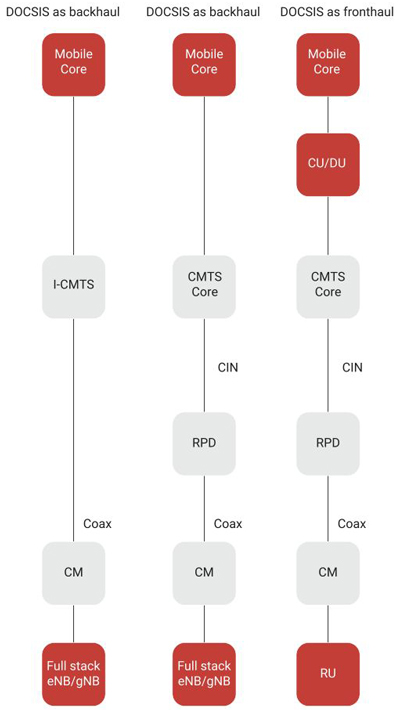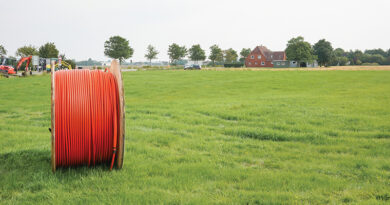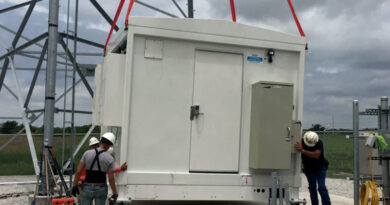DOCSIS® and Mobile Convergence
By Dr. Jennifer Andreoli-Fang
Convergence of the Consumer
Some 20 years ago, I moved off college student housing where everything was provided for me, to attend graduate school and live in off-campus apartments. Like every other consumer, I signed up for cable broadband, landline telephone, and cellular phone service, all from different service providers.
As our everyday life becomes digitized over the years, we rely on computers, mobile phones, and set-top boxes for everything life throws at us. As a consumer, wouldn’t it be nice to save some money while having a single service provider so that we can receive a single bill, log on to a single customer portal, deal with the same customer service rep and experience service continuity?
Convergence of the Operator
The desire of consumers to have a converged experience drives operators to provide converged services. Offering converged services presents cable operators opportunities to make more top line revenue while at the same time allowing consumers to save money on their monthly converged bill.
For cable operators, mobile is the next frontier. Despite innovations in newer subscription tiers and value-added services, broadband subscriptions will level out at some point. Mobile opens up a whole new market and a new set of opportunities for cable. We as cable operators are increasingly realizing the new revenue opportunity. That’s why about half of CableLabs’ members are mobile and we anticipate that number will increase. We are no longer just “MSOs,” we are “mobile MSOs.”
Providing multiple services could be a duplicative task if not done strategically. Does it make sense for the mobile MSO to build and run multiple networks, multiple provisioning and management systems, multiple operation teams, and create multiple and separate vendor ecosystems that cannot take advantage of the economies of scale? Is there an economical way to offer multiple services with a single network?
New generations of mobile technologies like LTE-Advanced and 5G are all about higher speeds and lower latency. To achieve these goals without having to acquire significant amount of new spectrum, operators need small cells. Small cells are interesting because they offer better frequency reuse, meaning, instead of many users on a macrocell sharing a single chunk of spectrum, fewer users share the same resource on a small cell, which results in higher average speeds per user. Higher speeds can also be achieved by simply adding more spectrum. There is a lot more spectrum at higher frequencies, and small cells are naturally suited to operate at higher frequencies where more attenuation results in smaller coverage radius.
To achieve these goals with LTE-A and 5G, operators need “densification.” Instead of deploying a single macrocell, the operator may need to deploy 20 to 50 small cells to cover the same area. This means operators need to “carpet bomb” a service area with small cells, as opposed to the traditionally sparse deployment model of macrocells which provides good coverage but mediocre performance.
The economics for deploying small cells are different from traditional macrocells. For outdoor small cell deployments, 60% of the cost comes from backhaul, 15% from site lease, 5% from powering, and only 20% is attributed to network equipment [1]. Using the ubiquitous HFC plant, clearly, mobile MSOs can save the cost of deploying a mobile network by 80% by reusing the existing HFC infrastructure.
Convergence creates a path to a new market with better consumer experience and customer retention, without doubling down on network buildouts. To make convergence happen, mobile MSOs need technology innovations to leverage the existing infrastructures and platforms.
Convergence of the Technologies
If you know DOCSIS®, you already understand the basics of mobile technology like LTE and 5G. Both technologies are multiuser systems sharing a finite spectrum. Both are point-to-multipoint (P2MP) systems. Both use radio frequencies (RF). Both require fiber network to the edge and RF to the end user.
What do we as converged technologists need to do to prepare vanilla DOCSIS to better xhaul for mobile?
Synchronization
Mobile deployments need precision synchronization and timing. For LTE-A and 5G, neighboring base stations, referred to in LTE as an eNB or a gNB in 5G, need to be synchronized to within 3 µs of each other. Attaching a GPS on each gNB can be expensive for the “carpet bomb” scenario, and difficult to make work for indoor and some outdoor “urban canyons.” It is therefore up to the DOCSIS network to carry and distribute timing to each gNB. The cable modem attached to the eNB/gNB will distribute timing to that eNB/gNB, and the CM must be able to synchronize its clock to a grandmaster clock residing somewhere else in the network.
One standard method for timing distribution over a network is the precision time protocol (PTP) that is defined in IEEE 1588v2. In essence, PTP uses a two-way time transfer (TWTT) messaging to compute the roundtrip time (RTT) between the timing master and the timing slave. To synchronize its clock, the slave adds half of the RTT to the timestamp it receives from the master.
But a DOCSIS network cannot simply carry PTP transparently, because its network asymmetry introduces too much difference in delay in the forward and reverse paths to use the “half of RTT” method. Instead, we developed a new technology called the DOCSIS Time Protocol, or DTP [2, 3], to determine the DOCSIS downstream path delay (because timing is only distributed downstream to the CM), and to communicate the timing offset which is used as a timestamp adjustment needed for the CM.
A PTP grandmaster that is located in the mobile MSO network disseminates clock information to its downstream clock slaves. The CMTS receives the PTP timestamp from an upstream router and synchronizes its internal clock and its DOCSIS timestamp to this PTP timestamp. Using DTP, the CM applies a time offset to the DOCSIS timestamp, converts it back to the PTP timestamp format, and distributes to its downstream gNB slave.
As the original PTP timestamp passes one or more slave clocks, some measurement imprecision is added to the mix. In the end, after passing through a series of network hops, the total error must be less than ±1.5 µs for the entire distribution chain, from grandmaster to the gNB.
Low Latency Mobile Xhaul (LLX)
5G is synonymous with low latency. LTE-A requires low latency to deliver good user experience. To xhaul for mobile, DOCSIS latency needs to be reduced from the current average of 15 ms to below 5-10 ms consistently.
Today, LTE and DOCSIS are two independent systems – their operations occur in serial. The overall latency is the sum of the two system latencies. Digging deeper, the two technologies have similar mechanisms to access the channel, and that is through a request-grant-data transfer process. The LTE process is longer than DOCSIS, resulting in higher latency than DOCSIS. This presents an opportunity for DOCSIS. Rather than waiting for the LTE transaction to complete and then start the request process on the DOCSIS side as it is today, we developed a new pipelining technology called “bandwidth report” (BWR), that enables LTE to tell DOCSIS about the data that is on its way, so that the DOCSIS request process can start earlier and in parallel (hence pipelining) with the LTE transaction. BWR leads to significantly reduced effective DOCSIS latency. The BWR technology has been shown to deliver 1-2 ms of latency on DOCSIS through a physical testbed [4, 5].
Various latency reduction techniques are proposed and are tailored towards certain conditions for fixed broadband services. LLX using BWR is a convergence technology that provides low latency on the DOCSIS network for all mobile traffic through scheduler pipelining and prediction.
Slicing
Slicing is one of the pillars of 5G. Slicing allows multiple isolated mobile networks to exist on one radio and xhaul path. Each slice can be a different functional group of people or even different operators. To enable slicing, individual network segments, including air, DOCSIS transport, and IP core, need to be treated as a whole to achieve a common quality of service (QoS) goal. This means DOCSIS QoS needs to match mobile QoS. Since the two technologies were designed by different committees, each has its own approach to QoS but the fundamental goal is the same, which is to provide differentiated service when the system becomes congested. Exposing the mobile QoS to the DOCSIS system enables QoS alignment. A common operations support system (OSS) that understands both mobile and DOCSIS is needed.
Converged Infrastructure
With the advent of virtualization techniques, it is possible to host cable and mobile network functions on the same physical hardware. Furthermore, software components for these functions are open source and can also be shared. See [6] for further reading.
What is Convergence?
For consumers, convergence is about creating a seamless and consistent experience. For mobile MSOs, it is about leveraging the HFC plant and infrastructure to capitalize on the new opportunities in mobile. For technologists, it is about innovating cable technologies and infrastructures for better xhaul.
The cable and mobile worlds are converging. One day, they will be the same world, for us as consumers, operators, and technologists.
—
1 Xhaul refers to fronthual, midhaul, or backhaul. In backhaul, DOCSIS network connects a traditional full stack mobile base station to the mobile core. Both fronthaul and midhaul are in the context of splitting the full stack base station into remote unit (radio), distributed unit, and central unit. In fronthaul, DOCSIS network provides connectivity between RU and DU; in midhaul, DOCSIS network provides connectivity between DU and CU.
—
Further reading
[1] https://www.fiercewireless.com/wireless/mun-spectrum-will-its-intrinsic-value-decrease-a-small-cell-world
[2] John T. Chapman, “The DOCSIS Timing Protocol (DTP) – Generating Precision Timing Services from a DOCSIS System,” SCTE Spring Expo, May 8, 2011.
[3] Synchronization Techniques for DOCSIS Technology Specification, CM-SP-SYNC-D02-190419, 2019, Cable Television Laboratories, Inc.
[4] John T. Chapman and Jennifer Andreoli-Fang, “Mobile Backhaul over DOCSIS,” SCTE Fall Technical Forum, Oct, 2017. https://www.nctatechnicalpapers.com/Paper/2017/2017-mobile-backhaul-over-docsis
[5] Low Latency Xhaul over DOCSIS Technology Specification, CM-SP-LLX-D02, 2019, Cable Television Laboratories, Inc.
[6] Cloud native toolkit: https://github.com/cncf/landscape
 Dr. Jennifer Andreoli-Fang
Dr. Jennifer Andreoli-Fang
CableLabs
Dr. Jennifer Andreoli-Fang is a Distinguished Technologist at CableLabs. Since joining CableLabs in 2007, Jennifer has led the development of full duplex DOCSIS, DOCSIS 3.1 and 3.0 MAC, and was a major contributor to unlicensed LTE. Jennifer is currently focusing on the convergence of DOCSIS and mobile, leading the technology committee on Mobile Xhaul over DOCSIS. She has 60 patents issued or pending, and more than 30 published papers at IEEE and SCTE.




